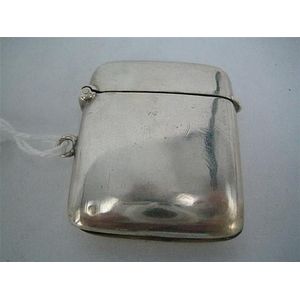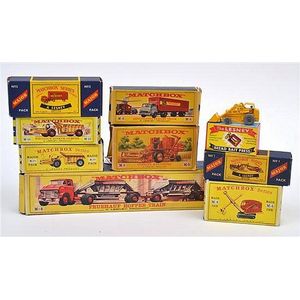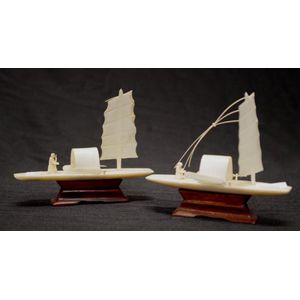Pair of 1930s Carved Ivory Chinese Junk Boats on Stands
You must be a subscriber, and be logged in to view price and dealer details.
Subscribe Now to view actual auction price for this item
When you subscribe, you have the option of setting the currency in which to display prices to $Au, $US, $NZ or Stg.
- Circa - A Latin term meaning 'about', often used in the antique trade to give an approximate date for the piece, usually considered to be five years on either side of the circa year. Thus, circa 1900 means the piece was made about 1900, probably between 1895 and 1905. The expression is sometimes abbreviated to c.1900.
- Ivory - Ivory is a hard white material that comes from the tusks of elephants, mammoth, walrus and boar, or from the teeth of hippopotamus and whales. The ivory from the African elephant is the most prized source of ivory. Although the mammoth is extinct, tusks are still being unearthed in Russia and offered for sale.
Ivory has been used since the earliest times as a material for sculpture of small items, both in Europe and the east, principally China and Japan.
In Asia ivory has been carved for netsuke, seals, okimono, card cases, fan supports, animals and other figures and even as carved tusks.
In the last 200 years in Europe ivory has been used to carve figures, for elaborate tankards, snuff boxes, cane handles, embroidery and sewing accessories, in jewellery and as inlay on furniture. Its more practical uses include being used for billiard balls, buttons, and a veneers on the top of piano keys.
The use and trade of elephant ivory have become controversial because they have contributed to Due to the decline in elephant populations because of the trade in ivory, the Asian elephant was placed on Appendix One of the Convention on International Trade in Endangered Species (CITES), in 1975, and in January 1990, the African elephant was similarly listed. Under Appendix One, international trade in Asian or African elephant ivory between member countries is forbidden. Unlike trade in elephant tusks, trade in mammoth tusks is legal.
Since the invention of plastics, there have been many attempts to create an artificial ivory
This item has been included into following indexes:
Visually similar items

A collection of Lego, including 2 sets of no. 224 2X2 curved Bricks, 1 set of no. 223 1X1 round Bricks, and 1 set of no. 221 1X2 Bricks, made in Denmark, circa 1950s

C1936-89 group, noted 1936 Leveson-Gower's XI photo with 10 signatures; 1949 New Zealand autograph page; 1953 Australia (6 signatures on pieces); 1956 Australia team sheet; 1965 New Zealand team sheet; 1968 Australia team sheet; 1980 Australia signed score

An Australian silver match case, plain; Prouds, c.1930

Eight Matchbox Majorpack and accessory models and two others, including the Lesney bread Bait press; M-2 articulated freight truck; M-5 Combine Harvester; and others, one unboxed (VG-M boxes P-E) (10)
